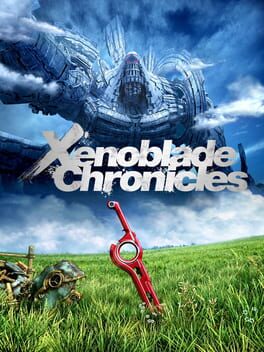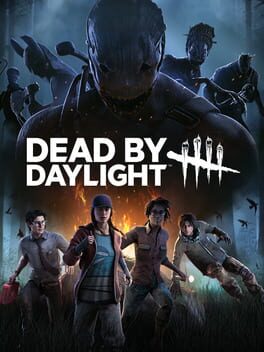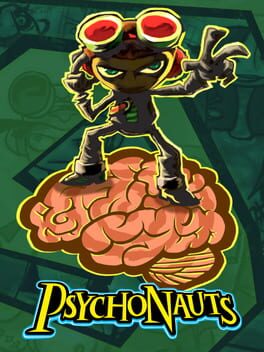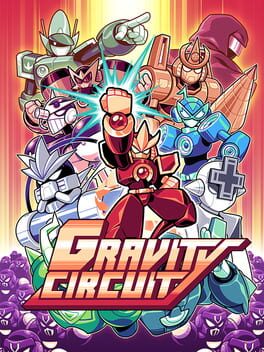TripleFFFUser
Bio
I swear I'll be productive tomorrow...
My rating system:
10-Masterpiece
9-Nearly perfect
8-Amazing
7-Great
6-Good
5-Okay
4-Flawed
3-Bad
2-Horrible
1-Dogshit
I swear I'll be productive tomorrow...
My rating system:
10-Masterpiece
9-Nearly perfect
8-Amazing
7-Great
6-Good
5-Okay
4-Flawed
3-Bad
2-Horrible
1-Dogshit
Badges

Liked
Gained 10+ total review likes

Organized
Created a list folder with 5+ lists

GOTY '23
Participated in the 2023 Game of the Year Event

Donor
Liked 50+ reviews / lists

Clearin your Calendar
Journaled games at least 15 days a month over a year

Listed
Created 10+ public lists

Best Friends
Become mutual friends with at least 3 others

Noticed
Gained 3+ followers

Pinged
Mentioned by another user

Epic Gamer
Played 1000+ games

Elite Gamer
Played 500+ games

Gamer
Played 250+ games

N00b
Played 100+ games

Roadtrip
Voted for at least 3 features on the roadmap

Busy Day
Journaled 5+ games in a single day

Full-Time
Journaled games once a day for a month straight

On Schedule
Journaled games once a day for a week straight
Favorite Games
1201
Total Games Played
083
Played in 2024
039
Games Backloggd
Recently Played See More
Recently Reviewed See More
Total Playtime: 6h 34m
One of the glaring issues with Mega Man-style games is that they tend to wear their influence almost too close to their sleeves to the point that I find myself thinking that I’d rather be playing Mega Man instead. Azure Striker, Legend of Dark Witch, and Gunman Clive are some examples that come to mind, while good games in their own right, tend to be overshadowed by their attempts to replicate Mega Man. And jumping into this, I was afraid it would fall victim to the same pattern. However, that is not the case and this game absolutely ROCKS! It has that same Mega Man vibe but it still manages to find the perfect balance where it still has its own identity.
Typically in a game like this one, you’re often having to rely on some sort of long range weapon to get the job done. In Gravity Circuit, your main source of damage comes from a barrage of punches and kicks, forcing players to engage enemies up close and personal. Additionally, you’re also equipped with a hookshot, which has a decent fire rate and moderate range, not the most ideal weapon for battle. However, its true potential lies in its ability to swing around ceilings and help you zoom around the level with ease.
At first I wasn’t really vibing with the hookshot and found myself wishing for a more traditional buster gun, especially since how finicky it can be when inputting a direction, often shooting straight when I aimed for an angle shot and vice versa. I also instinctively tried to latch onto the ceiling from the ground only to quickly learn that you must be mid air to be able to cling to ceilings in the first place, which threw me off balance for a lot of the earlier stages causing multiple deaths. There’s minor gripes I have with the hookshot’s mechanics. However, as I kept playing and overcame that initial hump, I found myself really getting into the rhythm of things and came to understand the badassery feeling you get whenever you flawlessly maneuver around levels all the while destroying everything in your path.
On top of that, you’re also given the ability to equip chips that modify certain attributes, allowing players the opportunity to change the playstyle that better suits them. Such as an additional jump to enhance mobility, increased damage and speed output for a more aggressive approach, or even defensive chips that help to restore your health. There’s dozens of chips, all that help to tailor your preferred playstyle, my personal favorite being the ability to use the hookshot to latch onto enemies and rapidly closing the gap between them.
There’s also the more traditional powers ups you acquire by defeating bosses. Once defeated, you have the opportunity to purchase some of their unique abilities for your own usage. However, despite having a vague idea based on the battle and a brief description, there’s no definite way to completely grasp an ability’s full functionality without having to go to a level and test it in action. It’s a minor thing, but I’d be nice to have some kind of preview window before purchasing an ability, or at the very least, have some sort of training room to let the player experiment with their newly acquired abilities. It’d be a quick sure fire to easily identify which one best complements one’s playstyle without the need to waste a bar during a level. On the bright side, the game is generous enough to allow you to switch between chips/power ups on the fly, which is much appreciated.
On a final note, Gravity Circuit has an honest heartfelt story. It’s by no means an award winning narrative, but it’s the thought put behind it that counts in my eyes. It has a sense of love and dedication put into it which I respect. It’s not perfect, some of the level designs are questionable, particularly when it came to enemy placements, bosses at times also felt a bit cheap in their difficulty. Overall, I still had a good time playing this. A solid 7/10 Mega Man-style experience that any fan of the formula should definitely check out.
One of the glaring issues with Mega Man-style games is that they tend to wear their influence almost too close to their sleeves to the point that I find myself thinking that I’d rather be playing Mega Man instead. Azure Striker, Legend of Dark Witch, and Gunman Clive are some examples that come to mind, while good games in their own right, tend to be overshadowed by their attempts to replicate Mega Man. And jumping into this, I was afraid it would fall victim to the same pattern. However, that is not the case and this game absolutely ROCKS! It has that same Mega Man vibe but it still manages to find the perfect balance where it still has its own identity.
Typically in a game like this one, you’re often having to rely on some sort of long range weapon to get the job done. In Gravity Circuit, your main source of damage comes from a barrage of punches and kicks, forcing players to engage enemies up close and personal. Additionally, you’re also equipped with a hookshot, which has a decent fire rate and moderate range, not the most ideal weapon for battle. However, its true potential lies in its ability to swing around ceilings and help you zoom around the level with ease.
At first I wasn’t really vibing with the hookshot and found myself wishing for a more traditional buster gun, especially since how finicky it can be when inputting a direction, often shooting straight when I aimed for an angle shot and vice versa. I also instinctively tried to latch onto the ceiling from the ground only to quickly learn that you must be mid air to be able to cling to ceilings in the first place, which threw me off balance for a lot of the earlier stages causing multiple deaths. There’s minor gripes I have with the hookshot’s mechanics. However, as I kept playing and overcame that initial hump, I found myself really getting into the rhythm of things and came to understand the badassery feeling you get whenever you flawlessly maneuver around levels all the while destroying everything in your path.
On top of that, you’re also given the ability to equip chips that modify certain attributes, allowing players the opportunity to change the playstyle that better suits them. Such as an additional jump to enhance mobility, increased damage and speed output for a more aggressive approach, or even defensive chips that help to restore your health. There’s dozens of chips, all that help to tailor your preferred playstyle, my personal favorite being the ability to use the hookshot to latch onto enemies and rapidly closing the gap between them.
There’s also the more traditional powers ups you acquire by defeating bosses. Once defeated, you have the opportunity to purchase some of their unique abilities for your own usage. However, despite having a vague idea based on the battle and a brief description, there’s no definite way to completely grasp an ability’s full functionality without having to go to a level and test it in action. It’s a minor thing, but I’d be nice to have some kind of preview window before purchasing an ability, or at the very least, have some sort of training room to let the player experiment with their newly acquired abilities. It’d be a quick sure fire to easily identify which one best complements one’s playstyle without the need to waste a bar during a level. On the bright side, the game is generous enough to allow you to switch between chips/power ups on the fly, which is much appreciated.
On a final note, Gravity Circuit has an honest heartfelt story. It’s by no means an award winning narrative, but it’s the thought put behind it that counts in my eyes. It has a sense of love and dedication put into it which I respect. It’s not perfect, some of the level designs are questionable, particularly when it came to enemy placements, bosses at times also felt a bit cheap in their difficulty. Overall, I still had a good time playing this. A solid 7/10 Mega Man-style experience that any fan of the formula should definitely check out.
Time Played: 24h 51m
The early stages of gaming is one I like to refer to as the era of “notebooks & secrets”. A time where people would get together and share tidbits of information with one another. Information that came in the forms of either a cool easter egg, an exploit of some kind or general tips. It was this sense of community that has unfortunately been lost with the rise of the internet. Long gone are the days of getting the latest issue of a game magazine to read on a game’s secrets, or sneaking a pen & paper into a book fair to quickly note some cheats codes from strategy guides. No more were people naive enough to take rumors at face value and attempt out ordinary secrets like the likes of unlocking Luigi in Super Mario 64 by running around a statue several hundreds of times. In the past, a game’s secrets could be kept hidden for years, only for those willing to go the extra mile to uncover them.
Nowadays, with the internet and the rise of data miners. Game secrets are often revealed within days, sometimes even hours, after being released, leaving no room for long-lasting mysteries to discover. This has made it increasingly harder for developers to include cool secrets or easter eggs that are reminiscent of old school games. This is particularly frustrating for developers who put a lot of effort into creating secret content, only to have it immediately revealed to the public. Many developers have given up on hiding secrets altogether, instead opting to sell extra content as DLC. Stuff like additional characters, alternative outfits and even entire modes have been repackaged just to get some quick extra bucks, selling content that at one point was simply a neat little bonus for anyone spending time playing the game. A practice that has unfortunately plagued the industry with no signs of stopping anytime soon.
Despite this, there are still developers who strive to create games with a sense of mystery and discovery. Where triple A companies have lost touch with their roots, indie devs are there to pick up the slack, taking up the mantle of preserving the integrity of what it meant to create a video game back in the day. As one of the lead developers of “Binding of Isaac” states, “I’ve learned there is no point in doing that stuff. And the best way to hide a secret is to just lock it in a challenging area”. And that’s exactly what many modern indie games ended up doing. Celeste, Hades, and Hollow Knight being some prime examples. While it doesn’t completely repel data miners to go digging around, it’s by far a much better solution than selling it additionally while maintaining its roots to past games. However, in the case of Tunic, instead of hiding its secrets behind a challenging area, it decides to hide behind a set of difficult puzzles.
At a glance, Tunic looks like another Zelda clone, and while it wears its influence on its sleeve, it’s anything but that. Sure, the early hours may follow familiar traditional Zelda beats, with players navigating dungeons, collecting items and finding the magical macguffins to progress through the story. However, it’s in the second act of the game where Tunic really starts to set its own unique identity.
Throughout the game, players come across scattered pages that form a manual for the game, gradually providing hints to some of its hidden mechanics. Using illustration and cryptic hieroglyphics, the manual teaches players about the game’s world and its inner workings. What was once a jumble of nonsensical symbols progressively starts to make sense as the player uncovers the truth one page at a time. And that’s the beauty of this game, its secrets aren’t locked behind challenging obstacles, but rather hidden within an encrypted fictional language that is spread across the entire map.
As players learn more about its language, symbols and its meaning, they begin to realize just how cleverly the game’s secrets are hidden in plain sight. The world itself becomes one massive puzzle that the player must piece together through their own knowledge and exploration. No amount of data mining will be able to reveal Tunic’s secrets by digging around. The only way to uncover its mysteries is to simply sit down, grab a controller and play the game the good old fashioned way.
It’s been a long time since I’ve felt such a great sense of mystery in a game. Tunic successfully captures that nostalgic feeling of being completely immersed in a game where you feel utterly completely lost, something that many modern games fail to deliver. I often found myself reaching for a pen and paper to decipher its secrets. While I managed to figure out some of its puzzles on my own, it was the endgame puzzles that really left a lasting impression on me. The complexity of the final puzzles pushed the limits of one’s knowledge and understanding of the game’s mechanics, to the point that the fanbase had to come together as a collective force to share information in order to fully unravel the final puzzles that no one sane person could ever do on their own. Seeing the collaborative efforts of the community reminded me of the days of “notebook & secrets”, where people would get together, driven by their passion for discovery, to complete a game. It reminded me of the joy and euphoria that came from solving a mystery either alone or as a group, and the craziest part is that after everyone’s efforts to solve the final puzzles, we’re not entirely sure if we’ve even discovered everything the game has to offer. There’s still countless unanswered questions that continue to drive the community to this day
Tunic is a one of a kind experience, a rare gem that is hard to come by within modern gaming. It stands out as a shining example of what games can achieve, and I can only hope that future devs take note and learn from its uniqueness. Tunic pushes the boundaries of what a game can truly offer and that there is so much untapped potential waiting to be explored and expanded on.
The early stages of gaming is one I like to refer to as the era of “notebooks & secrets”. A time where people would get together and share tidbits of information with one another. Information that came in the forms of either a cool easter egg, an exploit of some kind or general tips. It was this sense of community that has unfortunately been lost with the rise of the internet. Long gone are the days of getting the latest issue of a game magazine to read on a game’s secrets, or sneaking a pen & paper into a book fair to quickly note some cheats codes from strategy guides. No more were people naive enough to take rumors at face value and attempt out ordinary secrets like the likes of unlocking Luigi in Super Mario 64 by running around a statue several hundreds of times. In the past, a game’s secrets could be kept hidden for years, only for those willing to go the extra mile to uncover them.
Nowadays, with the internet and the rise of data miners. Game secrets are often revealed within days, sometimes even hours, after being released, leaving no room for long-lasting mysteries to discover. This has made it increasingly harder for developers to include cool secrets or easter eggs that are reminiscent of old school games. This is particularly frustrating for developers who put a lot of effort into creating secret content, only to have it immediately revealed to the public. Many developers have given up on hiding secrets altogether, instead opting to sell extra content as DLC. Stuff like additional characters, alternative outfits and even entire modes have been repackaged just to get some quick extra bucks, selling content that at one point was simply a neat little bonus for anyone spending time playing the game. A practice that has unfortunately plagued the industry with no signs of stopping anytime soon.
Despite this, there are still developers who strive to create games with a sense of mystery and discovery. Where triple A companies have lost touch with their roots, indie devs are there to pick up the slack, taking up the mantle of preserving the integrity of what it meant to create a video game back in the day. As one of the lead developers of “Binding of Isaac” states, “I’ve learned there is no point in doing that stuff. And the best way to hide a secret is to just lock it in a challenging area”. And that’s exactly what many modern indie games ended up doing. Celeste, Hades, and Hollow Knight being some prime examples. While it doesn’t completely repel data miners to go digging around, it’s by far a much better solution than selling it additionally while maintaining its roots to past games. However, in the case of Tunic, instead of hiding its secrets behind a challenging area, it decides to hide behind a set of difficult puzzles.
At a glance, Tunic looks like another Zelda clone, and while it wears its influence on its sleeve, it’s anything but that. Sure, the early hours may follow familiar traditional Zelda beats, with players navigating dungeons, collecting items and finding the magical macguffins to progress through the story. However, it’s in the second act of the game where Tunic really starts to set its own unique identity.
Throughout the game, players come across scattered pages that form a manual for the game, gradually providing hints to some of its hidden mechanics. Using illustration and cryptic hieroglyphics, the manual teaches players about the game’s world and its inner workings. What was once a jumble of nonsensical symbols progressively starts to make sense as the player uncovers the truth one page at a time. And that’s the beauty of this game, its secrets aren’t locked behind challenging obstacles, but rather hidden within an encrypted fictional language that is spread across the entire map.
As players learn more about its language, symbols and its meaning, they begin to realize just how cleverly the game’s secrets are hidden in plain sight. The world itself becomes one massive puzzle that the player must piece together through their own knowledge and exploration. No amount of data mining will be able to reveal Tunic’s secrets by digging around. The only way to uncover its mysteries is to simply sit down, grab a controller and play the game the good old fashioned way.
It’s been a long time since I’ve felt such a great sense of mystery in a game. Tunic successfully captures that nostalgic feeling of being completely immersed in a game where you feel utterly completely lost, something that many modern games fail to deliver. I often found myself reaching for a pen and paper to decipher its secrets. While I managed to figure out some of its puzzles on my own, it was the endgame puzzles that really left a lasting impression on me. The complexity of the final puzzles pushed the limits of one’s knowledge and understanding of the game’s mechanics, to the point that the fanbase had to come together as a collective force to share information in order to fully unravel the final puzzles that no one sane person could ever do on their own. Seeing the collaborative efforts of the community reminded me of the days of “notebook & secrets”, where people would get together, driven by their passion for discovery, to complete a game. It reminded me of the joy and euphoria that came from solving a mystery either alone or as a group, and the craziest part is that after everyone’s efforts to solve the final puzzles, we’re not entirely sure if we’ve even discovered everything the game has to offer. There’s still countless unanswered questions that continue to drive the community to this day
Tunic is a one of a kind experience, a rare gem that is hard to come by within modern gaming. It stands out as a shining example of what games can achieve, and I can only hope that future devs take note and learn from its uniqueness. Tunic pushes the boundaries of what a game can truly offer and that there is so much untapped potential waiting to be explored and expanded on.
Time Played: 3h 51m
You know that moment in the original Resident Evil where you go through a door and it plays a little animation of you entering the room? And how is it's neat creative way of loading up the next area without going to a boring black screen? Well, Spooky’s Jump Scare is essentially that but exaggerated to a thousand and not as charming. In this game, you mindlessly progress through countless rooms that each lack any kind of variety, while occasionally encountering some monster that chases you and which you must avoid by, you guessed it, entering different doors to lose it. Ultimately, the creatures in this game are a joke and you can simply hold forward and maybe sometimes swerve to the side to get them off your back. It’s an extremely repetitive game with honestly not much to offer, at least in terms of the main campaign, which is a shame because the little story that I have seen is interesting, albeit a bit silly at times but also charming. It just sucks that you have to mind numbingly go through the game to appreciate it. I’m aware that much of the game’s praise comes from its additional modes, one being a roguelike-esque mode where you have to escape from a handful of monsters from the base game at the same time. There’s also a mode that provides more structure to it that incorporates actual puzzles and a narrative that adds to the main campaign. However, after my four hour long session of opening door after door, I couldn’t be bothered to see what else the game had to offer. It’s a glorified door opening/walking simulator with an occasional cheap jumpscare.
You know that moment in the original Resident Evil where you go through a door and it plays a little animation of you entering the room? And how is it's neat creative way of loading up the next area without going to a boring black screen? Well, Spooky’s Jump Scare is essentially that but exaggerated to a thousand and not as charming. In this game, you mindlessly progress through countless rooms that each lack any kind of variety, while occasionally encountering some monster that chases you and which you must avoid by, you guessed it, entering different doors to lose it. Ultimately, the creatures in this game are a joke and you can simply hold forward and maybe sometimes swerve to the side to get them off your back. It’s an extremely repetitive game with honestly not much to offer, at least in terms of the main campaign, which is a shame because the little story that I have seen is interesting, albeit a bit silly at times but also charming. It just sucks that you have to mind numbingly go through the game to appreciate it. I’m aware that much of the game’s praise comes from its additional modes, one being a roguelike-esque mode where you have to escape from a handful of monsters from the base game at the same time. There’s also a mode that provides more structure to it that incorporates actual puzzles and a narrative that adds to the main campaign. However, after my four hour long session of opening door after door, I couldn’t be bothered to see what else the game had to offer. It’s a glorified door opening/walking simulator with an occasional cheap jumpscare.












